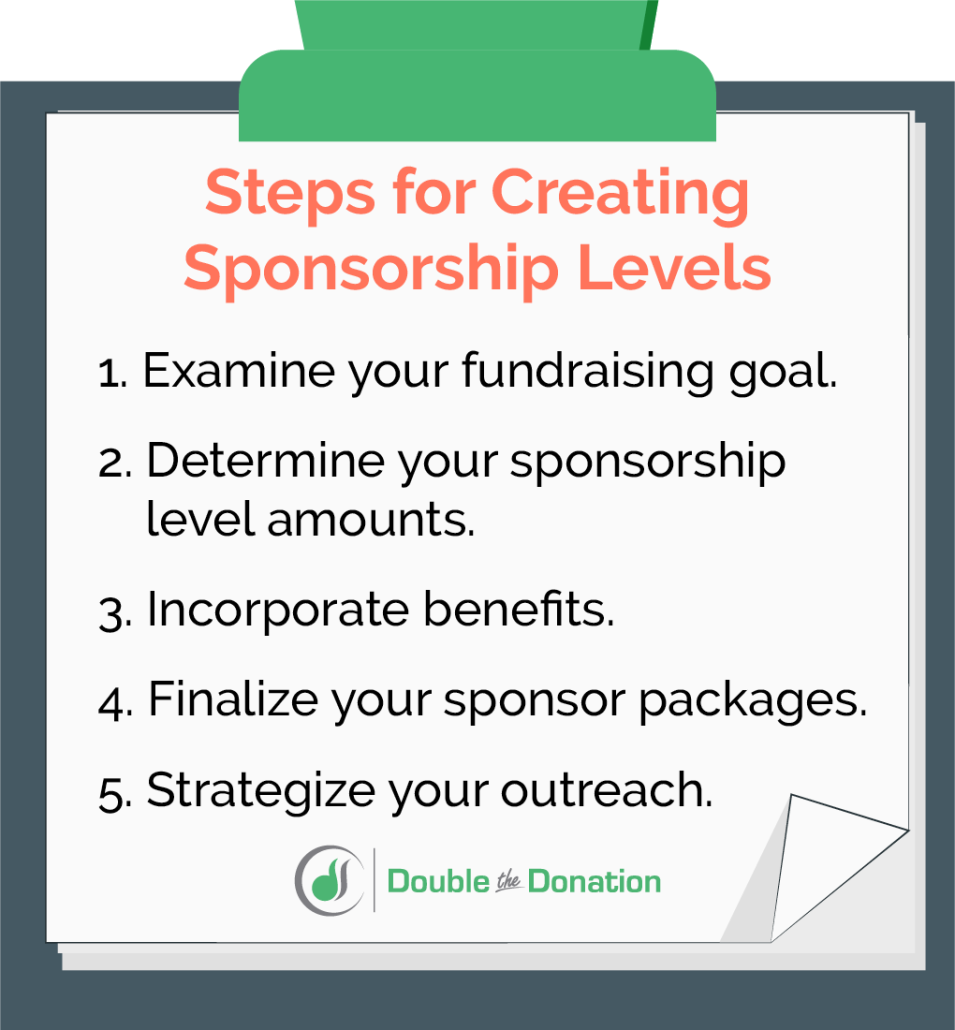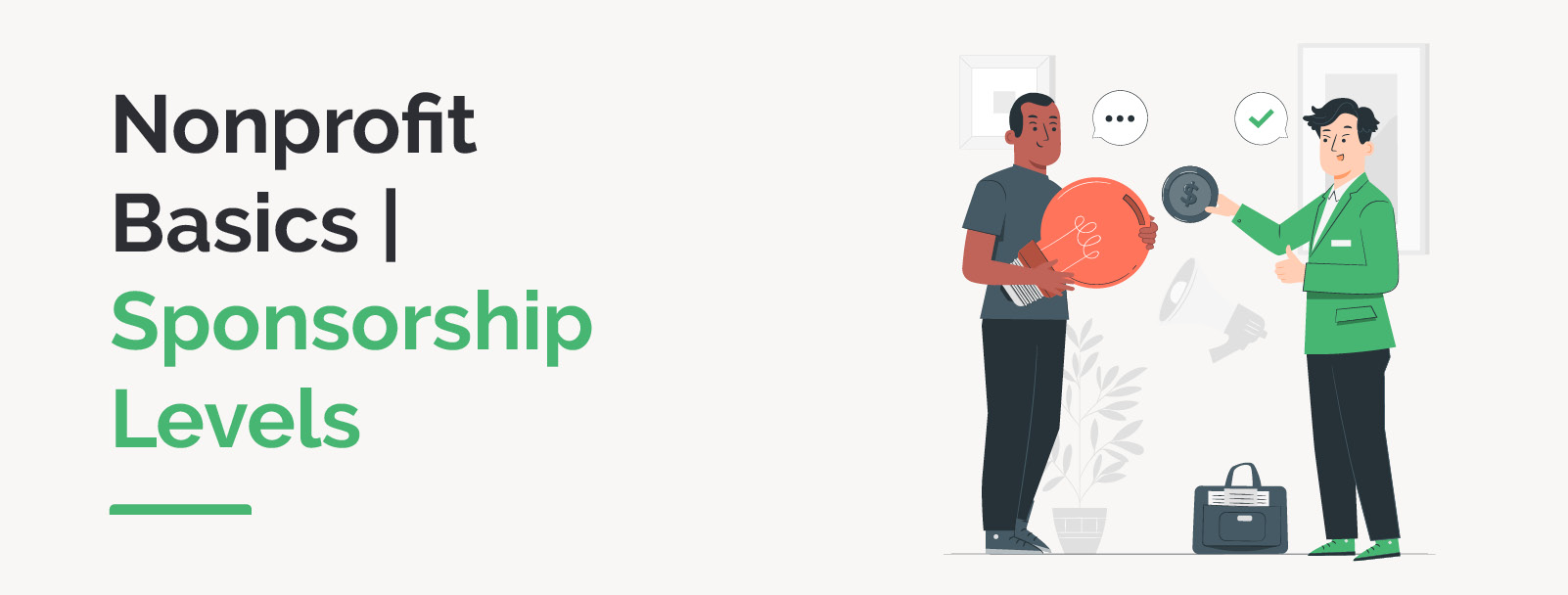Nonprofit Basics: Sponsorship Levels
For nonprofit organizations, your relationships with corporations and businesses are indispensable for your financial success and growth. As you prepare for upcoming fundraising events, consider creating sponsorship levels to maximize corporate support.
Presenting sponsor packages to corporations can alleviate time constraints and financial burdens on your fundraising team, as well as encourage a wider range of businesses to engage in corporate philanthropy toward your nonprofit’s initiatives.
What are sponsorship levels?
Sponsorship levels are tiered options for businesses to contribute funds and resources for a nonprofit event. To cultivate productive nonprofit-corporation relationships, both parties must work in sync toward collective and individual goals. For instance, when businesses choose to sponsor your charity walk or gala dinner, your marketing team can offer them increased exposure and brand recognition associated with that event.
By implementing premade sponsor packages, you can strategically optimize these relationships with corporate sponsors and attract even more engagement from businesses.
With sponsorship levels, corporations can choose how deeply they’d like to get involved with your nonprofit. Depending on their financial capabilities and dedication to your cause, they can conveniently select from predetermined options. For instance, you could have three simple levels for low-range giving, mid-range giving, and high-range giving.
What are the benefits of sponsorship levels?
Establishing sponsorship levels for your next nonprofit event can be an effective way to boost fundraising revenue. These attractive packages can broadcast enticing benefits to corporations as well, compelling more businesses to contribute to your efforts.
Here are some main advantages associated with creating sponsorship levels:
- Maximized fundraising revenue. Sponsor gifts can go a long way toward achieving your event’s fundraising goals. In fact, they can be much easier to solicit and secure than individual donations from event attendees. By strategically tailoring your interactions with corporate sponsors, you can maximize their contributions.
- Increased flexibility. Make it easy for businesses to engage with your nonprofit by providing them with the flexibility to involve themselves as much or as little as they desire. Laying out the options in a clear and informative format will ensure that they can easily choose a suitable package according to their priorities and capabilities. For example, they could choose between a challenge gift or helping you fund an event.
- Conserved time and resources. Having predetermined packages for corporations will simplify the workload for your fundraising team. Rather than having to figure out customized packages for each business that chooses to contribute to your event, you can point them toward your predetermined comprehensive sponsor packages.
- Expanded nonprofit-business relationships. There are various ways for corporations to make a positive impact toward your nonprofit’s mission. For instance, smaller businesses can help with marketing efforts or help your organization build closer relationships with your local community. By opening up options for all types of businesses to promote your cause, you’ll discover numerous benefits beyond just financial gifts.
How do I create sponsorship levels?
To get started with incorporating sponsorship levels into an effective fundraising program, first examine your current resources. Make sure you have the proper digital fundraising tools and relevant donor profile data to make informed decisions about your tiered packages.
To create an effective fundraising program with sponsorship levels, you’ll first need to evaluate your organization’s goals and resources to determine what will work best in your case.
Follow these comprehensive steps to set up sponsorship levels for your nonprofit:

- Examine your fundraising goal. This step is fundamental to any fundraising event or activity. Determine how much of your overall financial goal should be raised from sponsorships and some of the most effective ways to allocate those corporate funds. This information will guide you through setting your sponsorship level amounts.
- Determine your sponsorship level amounts. Refer back to your event budget and fundraising goal to make informed decisions on your sponsorship level amounts. These should be realistic figures that you can expect to reach from your corporate sponsors.
- Incorporate benefits. For each sponsorship level, think of benefits to include for businesses who participate. These additions will incentivize those who’re still considering whether to contribute and demonstrate appreciation to those who’ve chosen a sponsor package. Primarily, you can offer marketing or event benefits such as tickets or reserved tables to your sponsors, along with tax returns for charitable activity.
- Name your sponsor packages. Ensure that businesses have an easy way to identify each sponsorship level and its associated benefits by naming them. These could be as basic as bronze, silver, and gold. Another appealing option is to brainstorm names that reflect your nonprofit’s cause or the event’s theme.
- Strategize your outreach. Use your newly created packages to tailor your communications and sponsorship requests. Be mindful of each business’s size and resources as you reach out about suitable sponsorship levels.
Take the time to align your team on your fundraising goals and donor expectations to create sponsorship levels that are optimized for your organization.
What are examples of benefits to include in a sponsor package?
The benefits you offer for each sponsorship level should increase with each tier. A common benefit involves featuring the business on your social media platforms and website for positive marketing. You could provide sponsors with the opportunity to name events or programs as well.
As you’re coming up with ideas, get creative! Think of ways to incentivize corporations with varying goals and values to contribute to your fundraising efforts for years to come.
Other Resources to Explore
Nonprofit Basics – Learn more nonprofit management essentials by exploring other expert resources.
Matching Gifts: The Ultimate Guide for Nonprofits in 2023 – Matching gifts are another popular way for corporations to contribute to charitable causes. This guide discusses the basics of optimizing matching gift donations for your nonprofit.
Corporate Social Responsibility: The CSR Guide for 2022 – Corporations strive to contribute to society through philanthropic efforts and programs. Learn more about corporate social responsibility and its relationship to nonprofits here.


